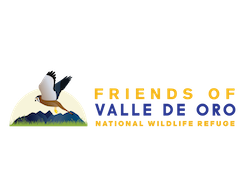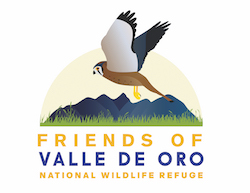ABQ Backyard Refuge Plant List
HabitatVIEW ON iNATURALIST
HabitatPDF
Planting InstructionsPDF
Seed ListPDF
Planting InstructionsPDF
We update our plant list from time to time to include additional information about habitat value and plant/wildlife associations. Check out the latest version!
You can use the database on iNaturalist to see pictures and the geographic distribution of each plant on our list.
Backyard Refuge Plant List General Notes
This list contains information about a few hundred plants that can be a great addition to your backyard refuge. Grasses are larval hosts for butterflies and seed for over-wintering birds; shrubs provide structure, cover and nesting sites as well as nectar and seeds; trees and vines provide layers of canopy cover in addition to specific foods.
The plant list is grouped as succulents, herbaceous (deciduous indicates perennials that die back to the ground when dormant, annuals indicate plants that generally die after one growing season and often self-sow under favorable conditions).
Approximate sizes are based on suggested watering for 10 + years in the garden. Since wildlife need open spaces as well as more densely planted areas, spacing of plants should be based on mature sizes to avoid diminishing the habitat value of the garden as plants mature.
A mix of deciduous and evergreen plants allow winter cover and increases diversity of visiting and year-round wildlife.
Light exposure describes which plants can provide understory cover and which are the canopy layer.
Water use varies with the soil and exposure (plants need more water on sunny, windy sites); plants may take less water when planted in protected, shady spaces. Generally, larger plants will need water over a wider area as they develop a larger canopy. Rainwater harvesting, directing stormwater into streambeds and basins is beneficial to most plants in the landscape, but only those noted as requiring the most moisture and those native to streambank ecosystems will tolerate standing water for more than a few hours in poorly draining soils.
Dry RW are plants that will thrive on rainwater with little or no irrigation once they are well rooted (typically after 3 or more growing seasons).
Dry are plants that prefer periodic soaking to a depth of 24 to 30 inches monthly during the growing season once well-rooted.
Dry + are plants that might need watering twice monthly in summer especially when rainfall is lacking or in sandy soils.
Medium are plants that may need water every two weeks, May through August, monthly or less during cooler weather.
Medium + are plants that may need water every two weeks April through September, monthly while dormant.
Moist are plants that are native along streams and/or at higher/cooler elevations that may need watering to a depth of 24 to 30 inches weekly, May through August, every two weeks in spring and fall and monthly in winter.
Seasonal Flowering and Fruiting notes help guide you in providing the most diverse year-round habitat.
Habitat Value is a short list of possible visitors/residents the plant will attract to your backyard refuge.
Newsletter and Blog
Each season, the ABQ Backyard Refuge Program sends out a newsletter of seasonal tips to support your efforts to build an ABQ Backyard Refuge! Sign up for our contact list to get a notice sent to your email!
Contact us
Address:
Friends of Valle de Oro National Wildlife Refuge
7851 2nd St. SW
Albuquerque, NM 87105
Phone:
505-750-3383
Email:
abqbackyardrefuge@friendsofvalledeoro.org
info@friendsofvalledeoro.org
Visit:
Valle de Oro National Wildlife Refuge is open every day, one hour before sunrise to one hour after sunset. The visitor center is open Tuesday through Saturday from 9am to 4pm.
Due to construction and restoration activites at Valle de Oro, please visit the Valle de Oro website for the most up-to-date information on any closures.





